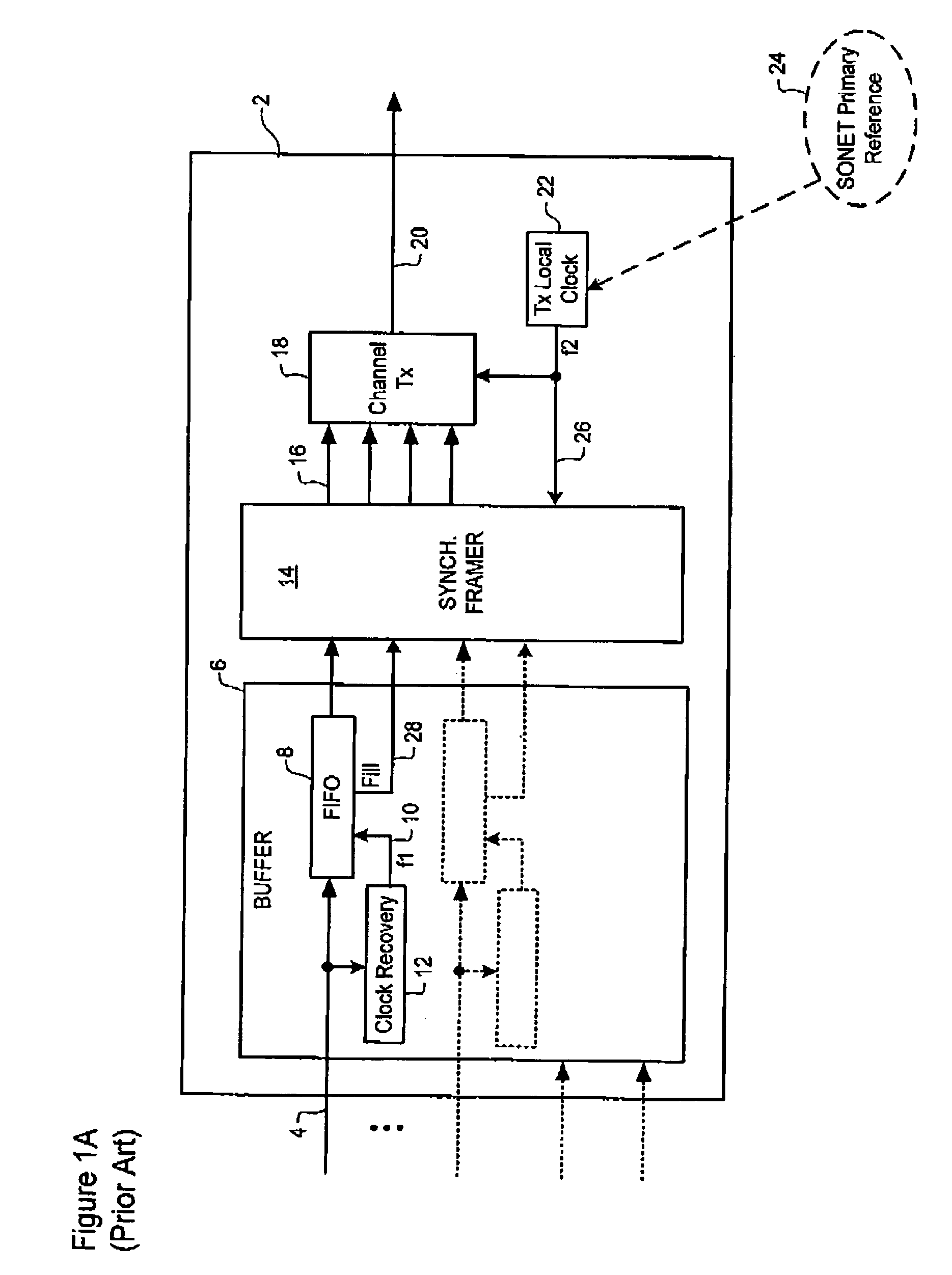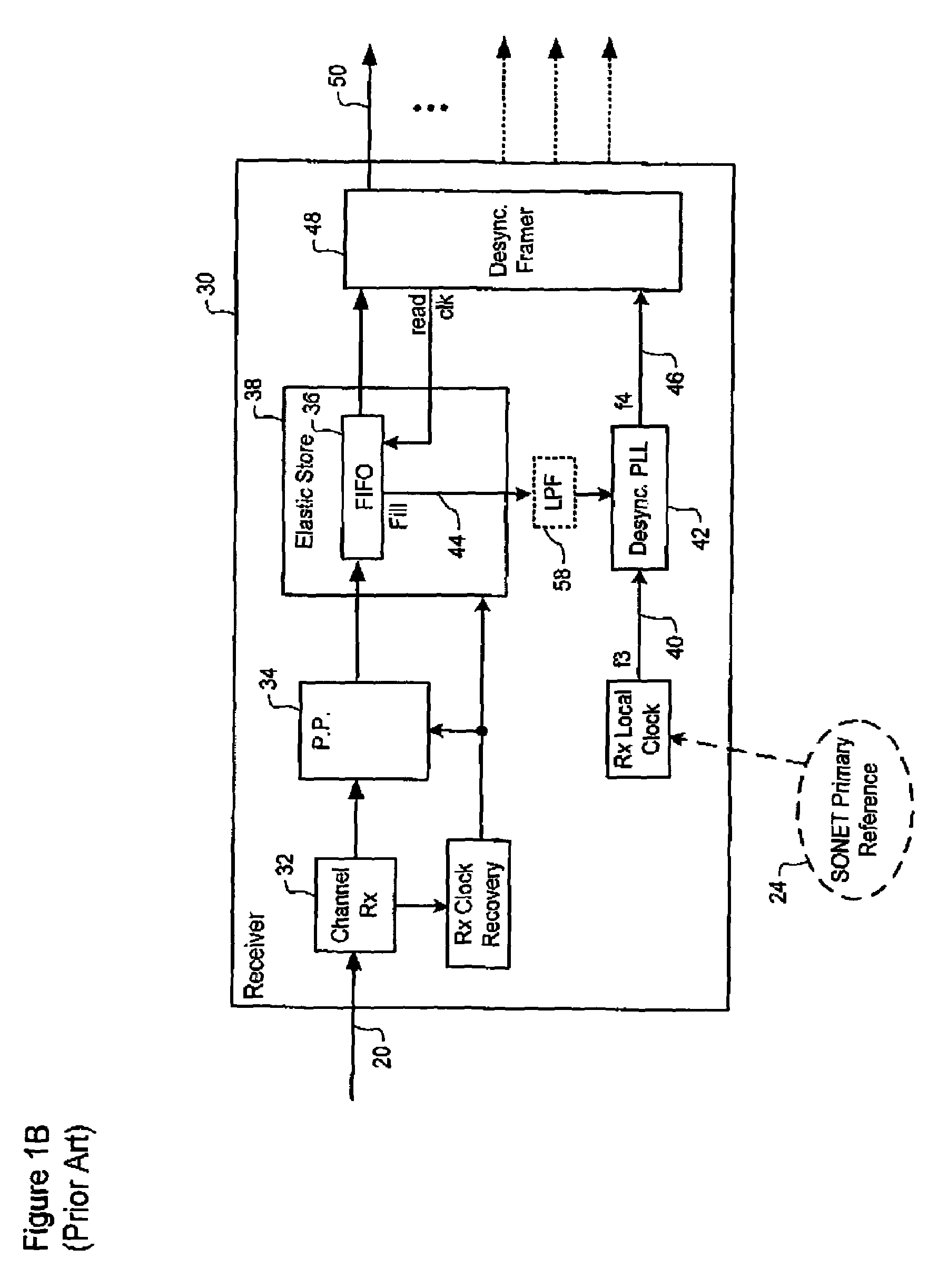Method and apparatus for digital data synchronization
a digital data and synchronization technology, applied in the field of communication networks, can solve the problems of loosening some transparency of subscriber timing characteristics, and achieve the effects of narrowing the bandwidth of the desynchronizer pll, loosening some transparency of subscriber timing characteristics, and reducing wait time jitter
- Summary
- Abstract
- Description
- Claims
- Application Information
AI Technical Summary
Benefits of technology
Problems solved by technology
Method used
Image
Examples
Embodiment Construction
[0028]FIG. 2A schematically illustrates a synchronizer and method of synchronization at an originating node whereas FIG. 2B illustrates the corresponding desynchronizer and method of desynchronization at a receiving node in a SONET or SDH network.
[0029]In general, the present invention teaches methods of rate adapting an asynchronous subscriber signal on to SONET STS frames without incurring waiting time jitter, by measuring the phase and frequency of the (asynchronous) subscriber signal and encoding this information into the frame overhead. Thus, as shown in FIG. 2A, a multi-bit digital timing estimate (F) is calculated (at 100) to indicate the difference between the tributary data rate f1, and the Tx local clock frequency f2. In the embodiment of FIG. 2A, the timing estimate F is computed as a ratio between f1 and f2. In other embodiments, the timing estimate F may be computed as a phase difference between the subscriber data signal and Tx local clock signal, calculated at the tim...
PUM
 Login to View More
Login to View More Abstract
Description
Claims
Application Information
 Login to View More
Login to View More - R&D
- Intellectual Property
- Life Sciences
- Materials
- Tech Scout
- Unparalleled Data Quality
- Higher Quality Content
- 60% Fewer Hallucinations
Browse by: Latest US Patents, China's latest patents, Technical Efficacy Thesaurus, Application Domain, Technology Topic, Popular Technical Reports.
© 2025 PatSnap. All rights reserved.Legal|Privacy policy|Modern Slavery Act Transparency Statement|Sitemap|About US| Contact US: help@patsnap.com



